

The first June weekend, we traditionally made a trip to the traditional Ecce Homo hill climb race, dominated by sports cars and prototypes for many years. The beginning of the race (and track) dates back to 1905, but as a complete independent race, it became better known during the 1950s, when it was a road racing circuit, mainly as part of the National Czech Championship, whose results can even be found on Racing Sports Cars (https://www.racingsportscars.com/track/Ecce%20Homo.html).












Sadly, in the 1951 edition of the race, one of the best Czech drivers at the time, a factory driver for a Tatra sports car, Bruno Sojka, was instantly killed after an accident, which was never fully explained. In memory of his heritage, one of the curves of the current hill climb is named after him. The hill climb race was renewed here in 1971, and after becoming an official and regular part of the European Hill-Climb Championship in 1981, it became the most traditional race on the championship schedule.












When we mentioned Bruno Sojka, it is worth mentioning that the curve named after him, as the accident happened there, is an ideal place for taking photos. We traditionally start taking picture documentation from the Sojkova zatáčka, as it is called in check. Generally, all photos showing cars from the left side or from a front view are taken there. Bruno Sojka's memorial is located on the left, below the level of the track. This is the place where his uncontrolled car reportedly ended up and cost his life and great carrier.

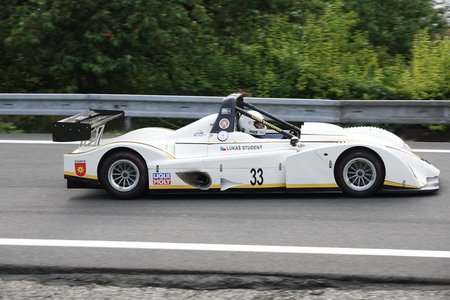



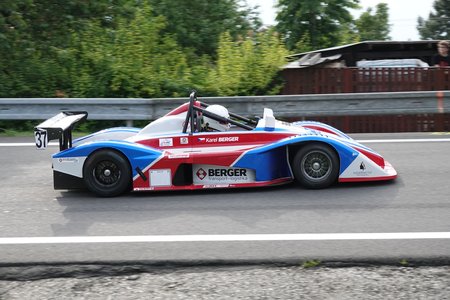






Back to the main race of 2024. The main news was the announcement that Christian Merli, the traditional overall winner of the race, will be skipping this race. The reason was that this year he was going to participate in the famous Pikes Peak hill climb, and thus he would miss two races from the ten-race schedule of the 2024 FIA European Hill-Climb Championship. Two results are being dropped from the overall standing, so he would still have a chance to fight for the overall title.












A problem is that there is one dropped result from the races any race skips, and another one is dropped from the race he officially took part in. That was a later explanation why Merli actually appeared on the official entry list; his car and team were present during scrutineering, and all was prepared for defending his last-year victory. Actually, he has won the last five editions of Ecce Homo since 2018. Note that the race was not held in 2020 due to a COVID-related agenda.









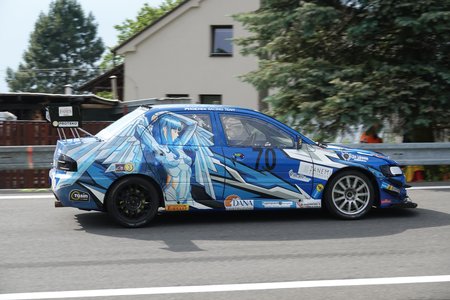


Fans were awaiting whether Merli would appear and if he would have flown from the U.S. But then the idea was that he just formally fulfilled the necessities of presence and scrutineering to be considered a participant (a driver does not need to be present during technical and formal checks), so he just made all this happen to get this race counted as the dropped result he participated in.












Well, with the winner of the past 5 editions, the situation seemed to be more open in regard to the overall winner. Moreover, the weather forecast expected a lot of rain, which would also influence the race a lot. In the end, the weather was much better than forecast, but still, there were two showers, influencing both heats. But the top drivers always had a dry track.












The biggest surprise was an Ecce Homo novice driver, Geoffrey Schatz, in a prototype Nova Proto 01, no. 22. He is not well-known here but famous in French circles, as he is a multiple champion over there. And he appeared as a favorit, though the situation was still rather open, with several other drivers at nearly the same level of performance. We can mention Joseba Iraola Lanzagorta from Spain, also in Nova NP01, no. 20; the best local Czech driver, Petr Trnka, driving Norma M20 FC, no. 18; or another Frenchman, Kevin Petit, in a special called Revolt 3P0 Décopeint, no. 19.












Together, there were 215 drivers from 16 European countries. The classification is rather complicated in this championship. Basically, faster cars are divided into Prototypes and Formulas/Single-Seaters. But some single-seaters are actually prototypes similar to former formula-based Can-Am cars. And recently, some of the prototypes featured a centre seat. Nevertheless, the main top categories are CN/E2-SC for sports cars and D/E2-SS for Formula Libre Group D and single-seaters.












The closed-topped cars are then divided into five so-called performance groups, which are based on several tens of parameters, to help classify a car into the correct group. It allows non-homologated cars and various specials, even vintage cars, to fight each other in close competition.














A problem is that drivers score points separately in SS and SC and also in Group 1 to Group 5, regardless of their overall position. And some classes are well supported in EHCC, while others feature only a handful of entries. By far, not all cars are running for EHCC points. There were many other championships that contested here a qualifying round for their respective series. All that is above the ability to report here, but generally it were the Czech Championship, Czech Trophy, Austrian and Slovakian championships, as well as several historic car classifications. Only real experts were aware of who was actually racing for what.
















In the end, Geoffrey Schatz won both heats and the race overall. The second overall position belonged to Joseba Iraola Lanzagorta, who managed to beat Petr Trnka in the second heat. Thus, the best local Czech driver filled the podium, finishing nearly 6 seconds ahead of Kevin Petit and Correntin Stark. Another two seconds back were Swiss Robin Faustini and the best German driver, Alexander Hin. He was also the winner of the SS/single-seat category, in which Christian Merli also participated in beating Joël Volluz in a similar Osella FA30 but by four and a half seconds.
















We would have to go very far into history to find another Ecce Homo race where the best Osella was only 7th. The competition gets really stronger. Note to say that both Osellas, despite being single-seaters, are pure sports prototypes. Actually, the best proper open-wheel car was the Tatuus Formula Master, driven by Hermann Waldy, 17th overall, far back behind the fastest Touring/GT cars, the Mitsubishi Lancer Evo IX (13th with Liridion Kalenderi from Kosovo at the wheel), and the McLaren F1 Evo 2019 (David Komáred, from the Czech Republic, 14th). All other places in the top 20 were taken by various sports prototypes except for the third closed car in Performance Group 1: 19th place was taken by the only Ferrari in the field, the Ferrari 488 Challenge Evo of Igor Stefanovski. He beat the best Porsche (21st) despite being huge in numbers. In total, we had 11 Porsches on the grid, though nearly half of them raced in the vintage categories.




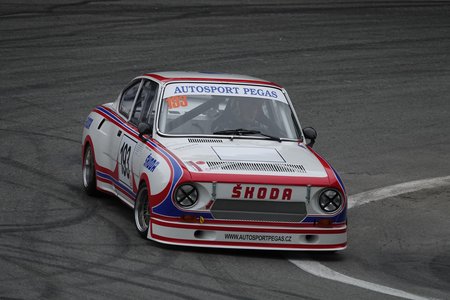








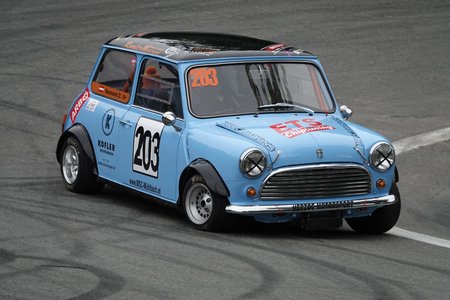


Complete results can be found here: https://online.timing.sk/ehonline/absolute?Pretek=469. This can also help you to allocate cars and drivers to the photos, as by default Racing Sports Cars statistics do not cover hill climb races, despite the fact that many of them can be found here, as they were part of either the World GT Championship in the early 1960s or any other covered championship, like DRM 1972-1973 or some Italian and US national championships, which also consisted of some hill climbs.















